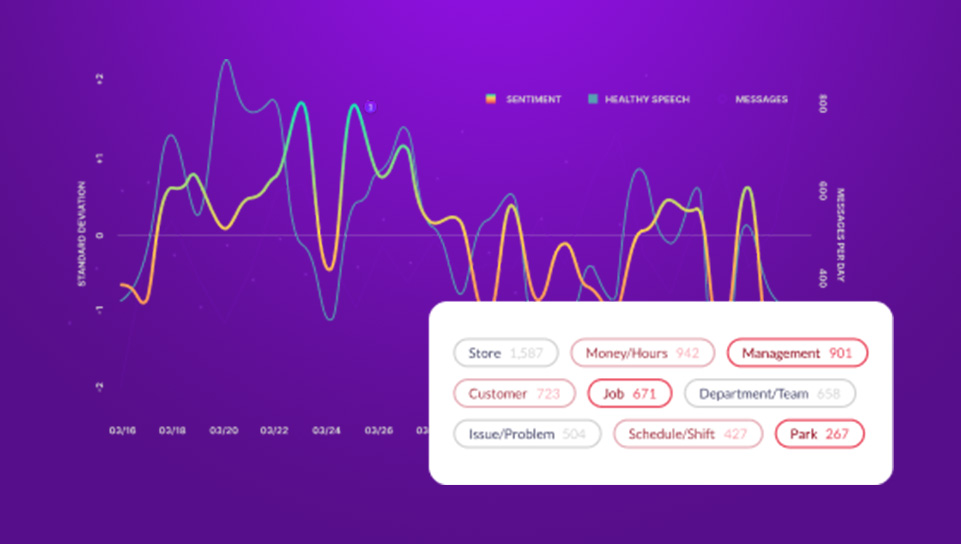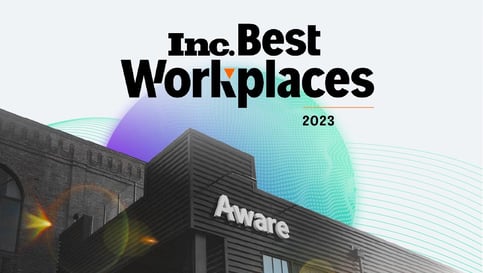How to Win Over Human Resources on Collaboration Adoption
by Aware
If you’re driving the adoption of a digital enterprise collaboration platform, like Workplace by Facebook, Yammer or Microsoft Teams—you will deal with a variety of stakeholders. At some point, you will need to get approval from your human resources department, among other stakeholders, for enterprise collaboration.
Naturally, human resource teams care about the human side of your organization. They cultivate and drive the organizational culture and processes that every team within an organization leans on to work effectively and efficiently. Employee engagement, sentiment, safety and compliance are a few of the key issues that concern HR leaders.
Your human resource leaders will have questions for you during your collaboration roll-out. Here are a few to expect:
How do we know that employees will use these tools to communicate productively versus wasting time?
Prior to rolling out a digital collaboration solution to your employees, create a community management strategy:
- Identify a community manager
- Define what endorsed behavior looks like on these tools for your organization: Are there specific topics (e.g. personal, confidential) that are off limits? Where should certain information live in the tool? Should specific questions or topics be pointed to certain groups or individuals?
- Outline how the community manager will monitor the digital community and reinforce these endorsed behaviors
- Have a response plan for unproductive or distracting Workplace behavior
How do we shield our employees against toxic behavior—such as inappropriate language or sexual harassment—in these tools?
Unfortunately, human behavior risk lives in every organization. If they exhibit toxicity in the workplace, employees will likely take these tendencies to a digital platform—especially in private areas such as chat or closed groups.
Give your human resource team the peace of mind that the digital community is being governed by a watchful eye. The best way to protect employees against unsafe or toxic coworker behavior is through real-time monitoring. Pair your digital workplace solution with a tool that surfaces content by keywords and behavior anomalies.
What’s the most effective way to ensure employee compliance with company policies and code of conduct when using new collaboration tools?
Depending on your company’s industry and level of comfort with risk, ensuring that employees are honoring company policies is critical to the success of your project. The way employees conduct themselves online is a reflection of how they conduct themselves in the workplace.
As the champion of digital collaboration, your job is to implement the safeguards so that your company is responding appropriately if things go awry.
Don’t worry, this can be accomplished in two simple steps:
- The first step is ensuring that community managers have access to employee public and private communications. This is key to monitoring and responding to inappropriate behavior, and also for discovery if further investigation is necessary.
- Secondly, partner with your human resources team to create a response and escalation plan for concerning behavior. Who needs to be notified of the incident? Should the content be removed from the platform? How should the offending employee be coached?
How can we utilize these platforms to better understand workplace engagement and sentiment?
Here’s a way to win over your human resource teams—add value to their current workflow.
Knowing that employees will conduct themselves digitally as they will in the real-life workplace; the opportunity to tap into the conversation data that is generated on these tools is profound.
Human resource teams spend millions on annual surveys and other tools to understand employees’ mood and perception towards their organization, leadership and culture. However, these antiquated practices are inefficient and grossly inaccurate.
Pair your tool rollout with an integration partner who offers powerful insights, such as real-time sentiment or level of employee toxicity.
The research is clear: companies with a digital workplace demonstrate faster time-to-innovation, higher employee retention, increased productivity and revenue growth.
So, implemented correctly—these platforms will help transform and enhance collaboration in your organization. But it’s not going to happen overnight, and it won’t happen automatically.







